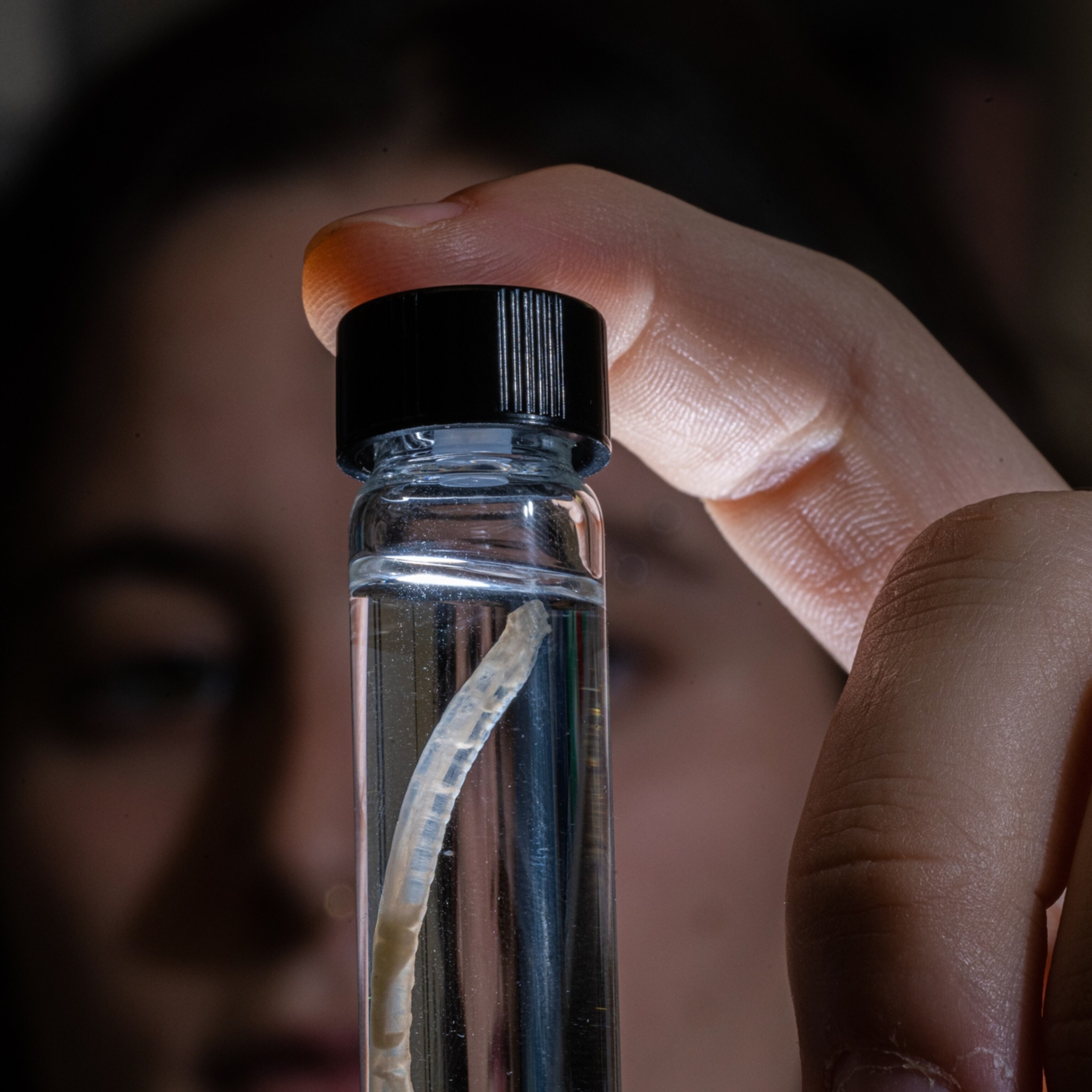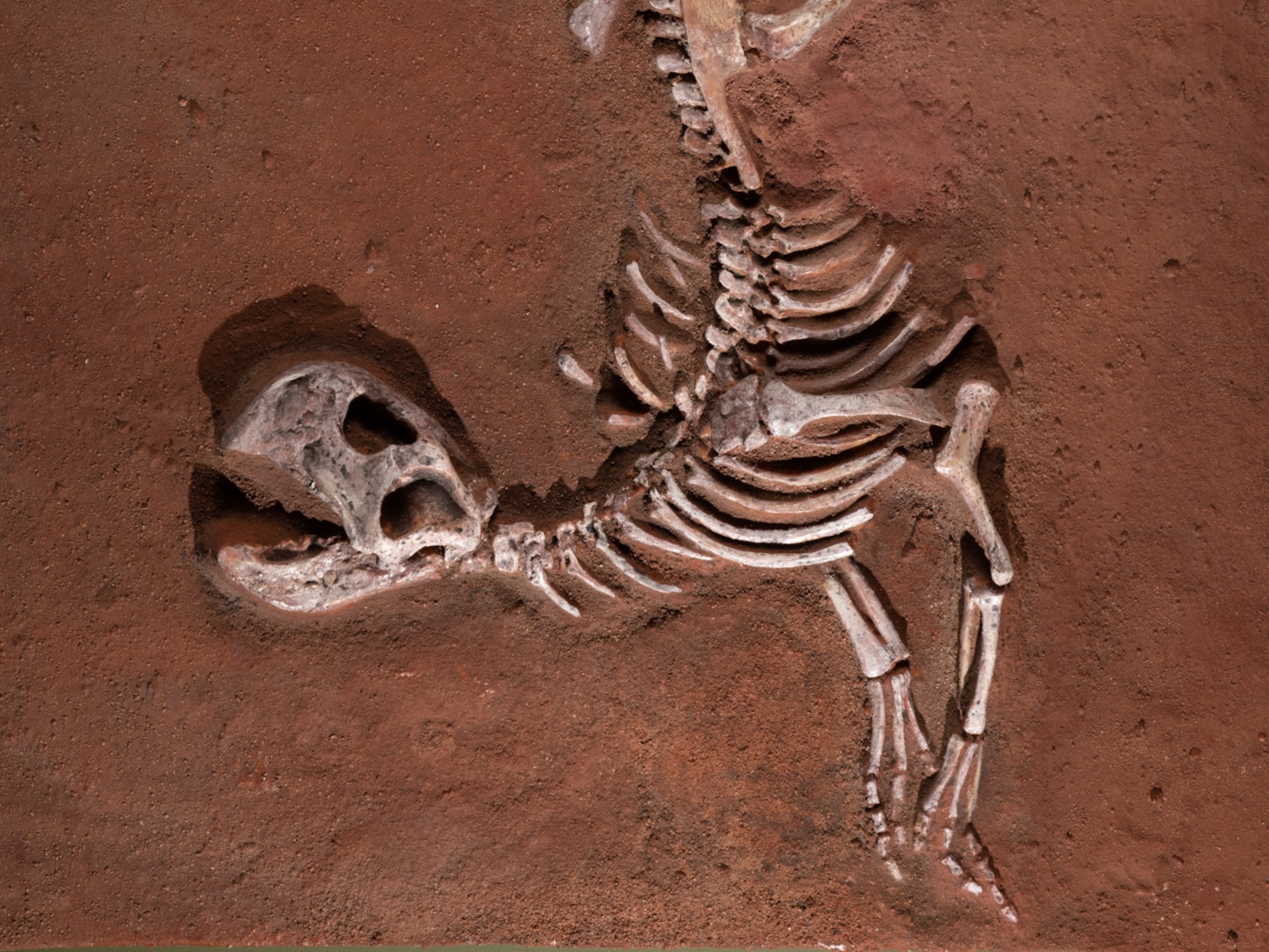
First-ever photos of bobcat eating invasive python eggs show 'Everglades fighting back'
A bobcat was observed raiding a Burmese python nest in South Florida. Seeing such resistance by a native animal is good news, scientists say.
In the past few decades, the number of invasive Burmese pythons has exploded in South Florida, especially in the Everglades. Because they are very difficult to find and track, however, many details of their behavior and ecological impact remain sketchy, such as how native species respond to their presence.
A new photo montage from a wildlife camera in Florida’s Big Cypress National Preserve provides visual evidence of the Everglades “fighting back.” The images, captured in June 2021, show a bobcat raiding a python’s nest—the first observation of any Floridian animal preying upon the invasive snake’s eggs.
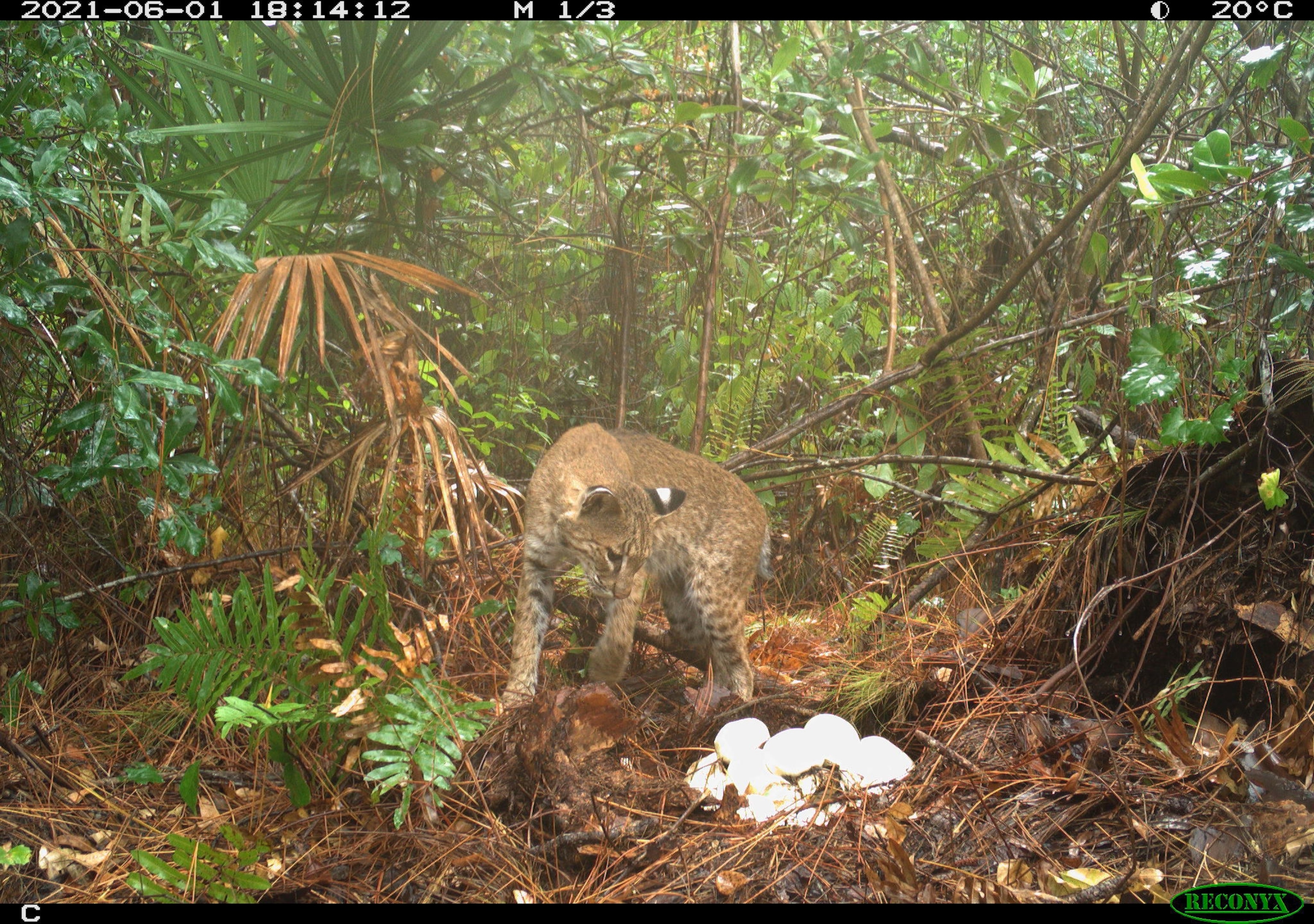
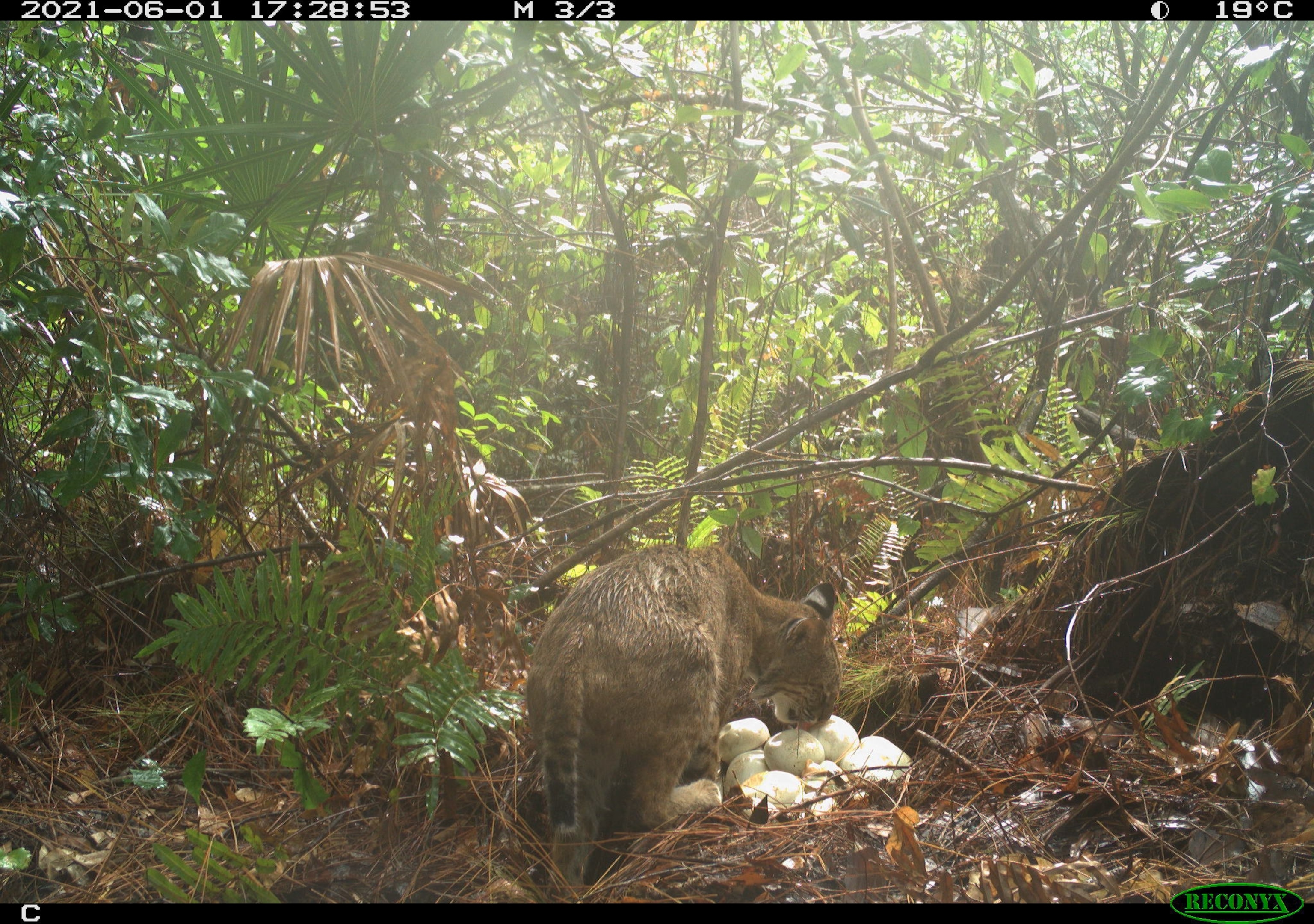
After happening upon an unguarded nest, the photos show, the curious bobcat sniffs about, scarfing a few eggs and trampling dozens more. Then he covers the nest, saving them for another day. After leaving and returning a short while later, he finds an unwelcome surprise: The nesting python is back on guard. An image captures the roughly 14-foot, 120-pound female python stretched out in striking position, having lunged at and possibly bitten the 20-pound bobcat; in the next, he’s taking a swipe at her.
Bobcats have been known to eat other reptile eggs, but never those of Burmese pythons; the two species have also never been documented actively antagonizing each other before. For Florida biologists, the aggressive interaction is a morale-boosting sign that the Everglades are learning to push back against the invasive apex predator who, until now, has rarely been challenged by native species.
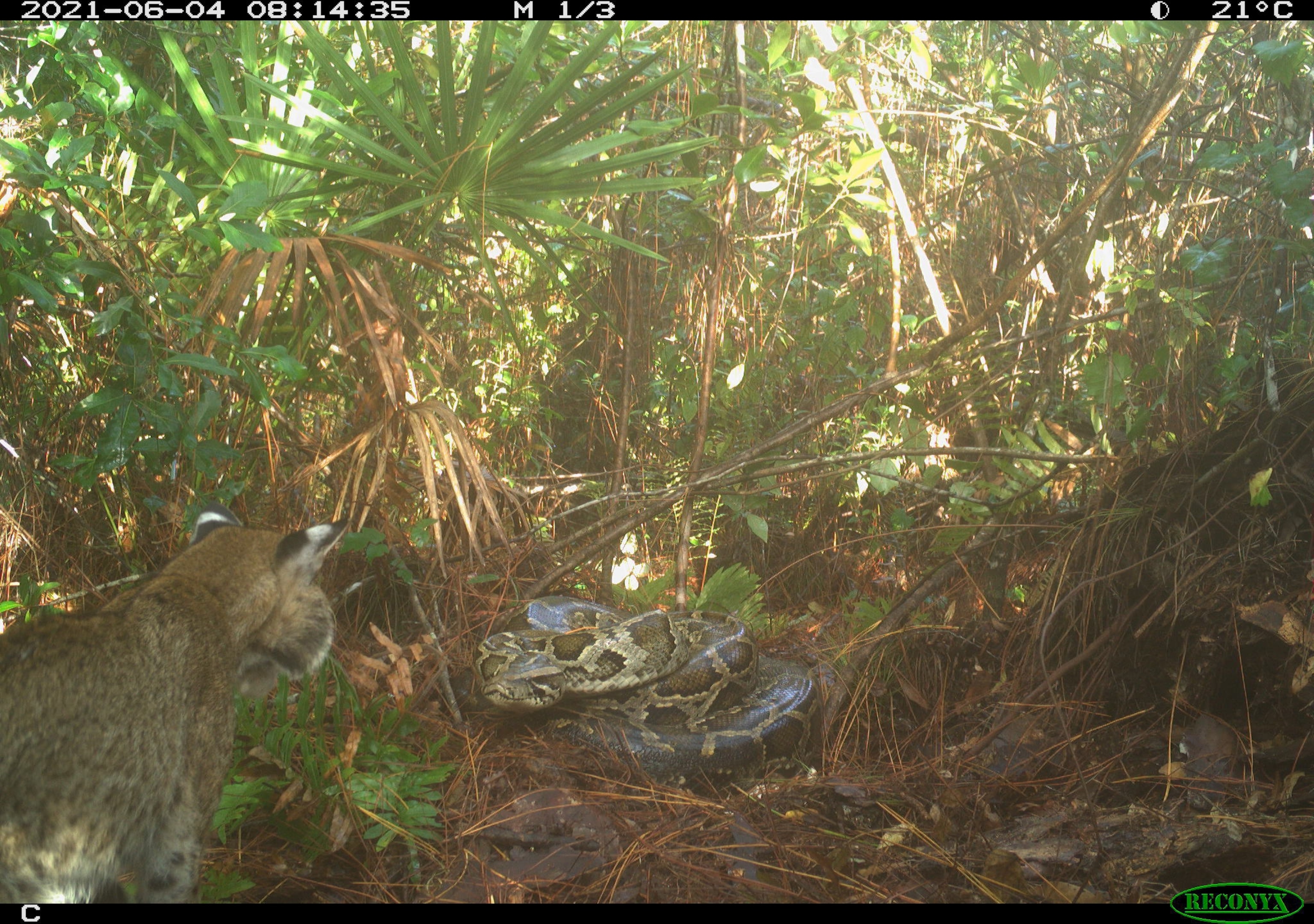

“When we see something like this, it’s so exciting,” says Andrea Currylow, a U.S. Geological Survey ecologist stationed in Everglades National Park who led the Ecology & Evolution report detailing the finding. “The native species are learning, they’re adapting, [and] they’re able to be more resilient to an invasive species.”
Photos show the bobcat was apparently uninjured and returned to the nest repeatedly over the next several weeks, after the snake was removed by researchers.
“Luckily, [the python] wasn’t interested in eating” the nest-raider, Currylow says. “But man, that’s a brave bobcat.”
Resisting the invaders
Ecologists are eager to see signs of resilience because Burmese pythons have devastating impacts on the ecosystems they invade. The snakes first arrived in the Everglades after being set loose or escaping from pet owners and breeding facilities in the 1980s and 1990s. Since then, about 90 percent of all mammalian species have seen their populations decline, Currylow says. That loss of prey, ranging from rodents to deer, could also impact other predators such as the native Florida panther.
“When you get interactions like this and see the native wildlife fighting back, it’s like a ray of sunshine for us,” says Ian Bartoszek, an ecologist with the Conservancy of Southwest Florida. “In 10 years of tracking snakes, I can count on one hand the number of observations” of native animals standing up to the snakes, he says. In another instance of resilience, the team recently found evidence of native cottonmouth snakes eating newly hatched pythons.
Alligators, black bears, and Florida panthers are also known to be capable of eating adult pythons. Bobcats have been known to attack adult pythons, although this had never been photographically documented until now. In 2019, researchers found a python carcass with claw marks scraped along its body, cached away in a stand of Everglades cypress trees. The scratches matched the size and shape of bobcat claws. The same team documented a female python body with scratches and a puncture wound—bite marks from a bobcat.
Snake-eating bird species such as kites, red-shouldered hawks, ospreys, and some waterbirds—herons, ibises, and storks—have all been hypothesized as potential predators of young pythons, but this has not been observed, Currylow adds. (Learn more: How America’s most endangered cat could help save Florida.)
Bobcats are found throughout much of North America, including most of Florida, and are generally thought to be bouncing back after years of decline. In Florida, though, their fate is less clear. One 2010 study found Florida was the only state in which bobcat populations were declining, perhaps as a result of competition with Burmese pythons, who drive drops in small prey mammal populations. But the new interaction suggests bobcats are not defenseless against these exotic serpents.
In addition to looking for signs of “fighting back,” ecologists are building up basic knowledge about how the pythons live, their life histories, and vital signs. This information will lead to better python population models and management strategies, Currylow explains.
“This actually makes me wonder how many clutches don’t make it,” says Kristen Hart, a USGS ecologist at the Wetlands and Aquatic Research Center in Florida. “Right now, the assumption is that of all the eggs that are laid, somebody’s going to make it out of the clutch.” The photos suggest that’s not always true.
“I think the next couple years are going to be very exciting, very telling. With a lot of people on the ground, observing pythons daily, I suspect there will be more exciting information like this bobcat interaction coming out,” Hart says. “And hopefully we’ll get these guys figured out.”
Hard to find
Even with teams of dedicated ecologists and biologists tracking both pythons and bobcats in the preserve, the odds were stacked against Currylow and her colleagues for capturing these moments.
Burmese pythons are bizarrely hard to find in the wildlands of Florida, even when they’re being tracked with radio telemetry. Tracking pythons is demanding, sometimes frustrating work that only attracts a small—though dedicated—group of people.
“You have to hike for miles and miles in waist-deep water to access these areas. And then once you do, when we track these snakes, it takes us a while to find them even though we know that they’re right in front of us,” Currylow says. “We could be standing on [the spot] where we get the signal, and we’re trying to figure out where the snake is.”
That’s because they are an “extremely cryptic species,” Bartoszek says. They are very well camouflaged and spend much of their time underwater, or otherwise tucked away under trees at the fringes of the wetlands.
To find nesting pythons, ecologists use various methods, such as employing “scout snakes” (though these weren’t used in this instance). The technique involves tagging pythons, mostly male, and then tracing their movements, looking for patterns. Often, males will lead researchers right to the females’ nests.
Most nesting pythons are removed immediately after discovery, but Big Cypress ecology teams successfully made the case for delaying some pythons’ removal so they could be observed.
In this case, scientists installed a wildlife camera after finding the nest, hoping it could catch the snake’s movements. It didn’t. The snake moved too slowly and steadily to trigger the camera. It was only when the bobcat prowled onto the scene (just a day after the camera was installed) that captures began. The python’s temporary abandonment of her post was unusual, too, Currylow says. Nesting pythons usually stay put, which might keep bobcats and other would-be predators away.
“It’s a win for science when you can get observations because you did things a little differently,” Hart says.
When Currylow’s team returned to the nest and found a bevy of broken eggs, they thought the snake may have been the culprit, accidentally crushing them by moving around. But when she and her team looked at the photos and saw the bobcat, “we were just floored.”
With all the difficulties and coincidences that went into capturing these images, the odds of finding similar moments in the wild may be small, but ecologists like Currylow are going to keep looking.
“We don’t know the prevalence of this type of [behavior],” Currylow says. “We hope to see more of it.”



